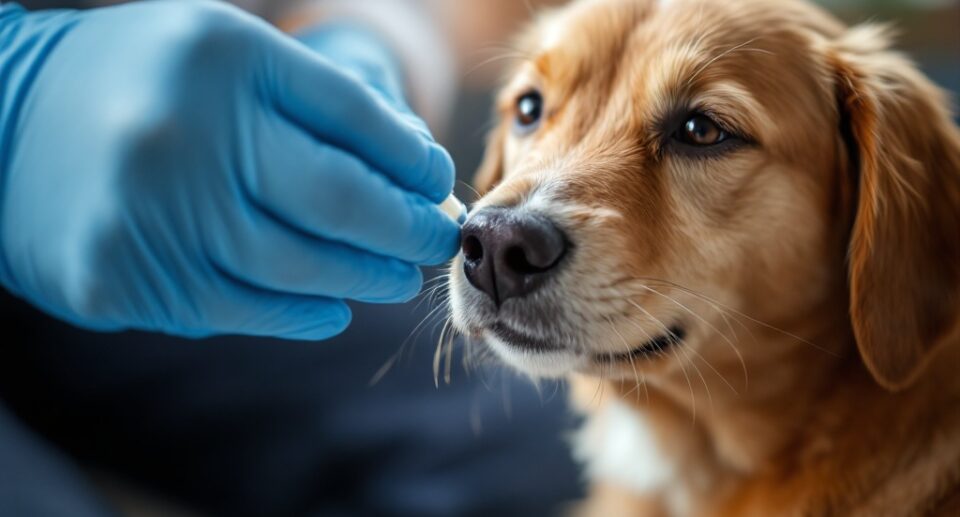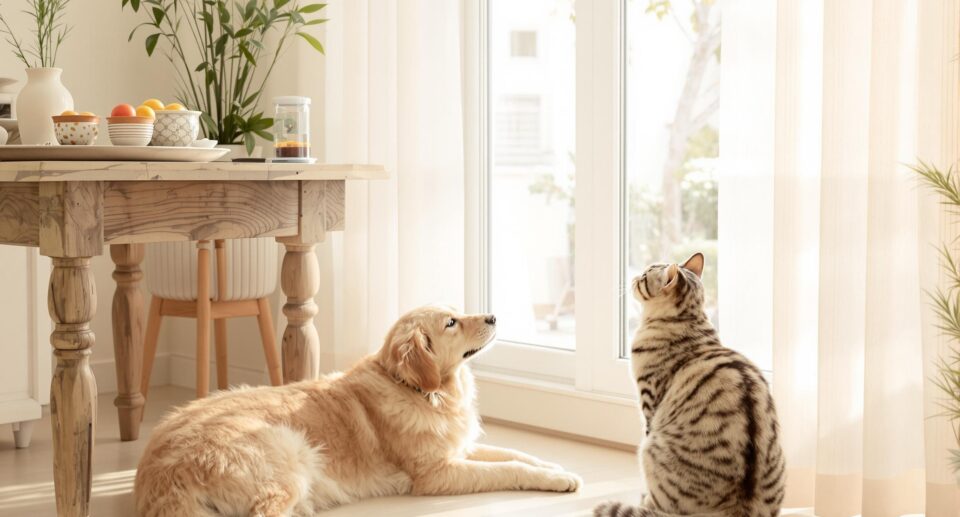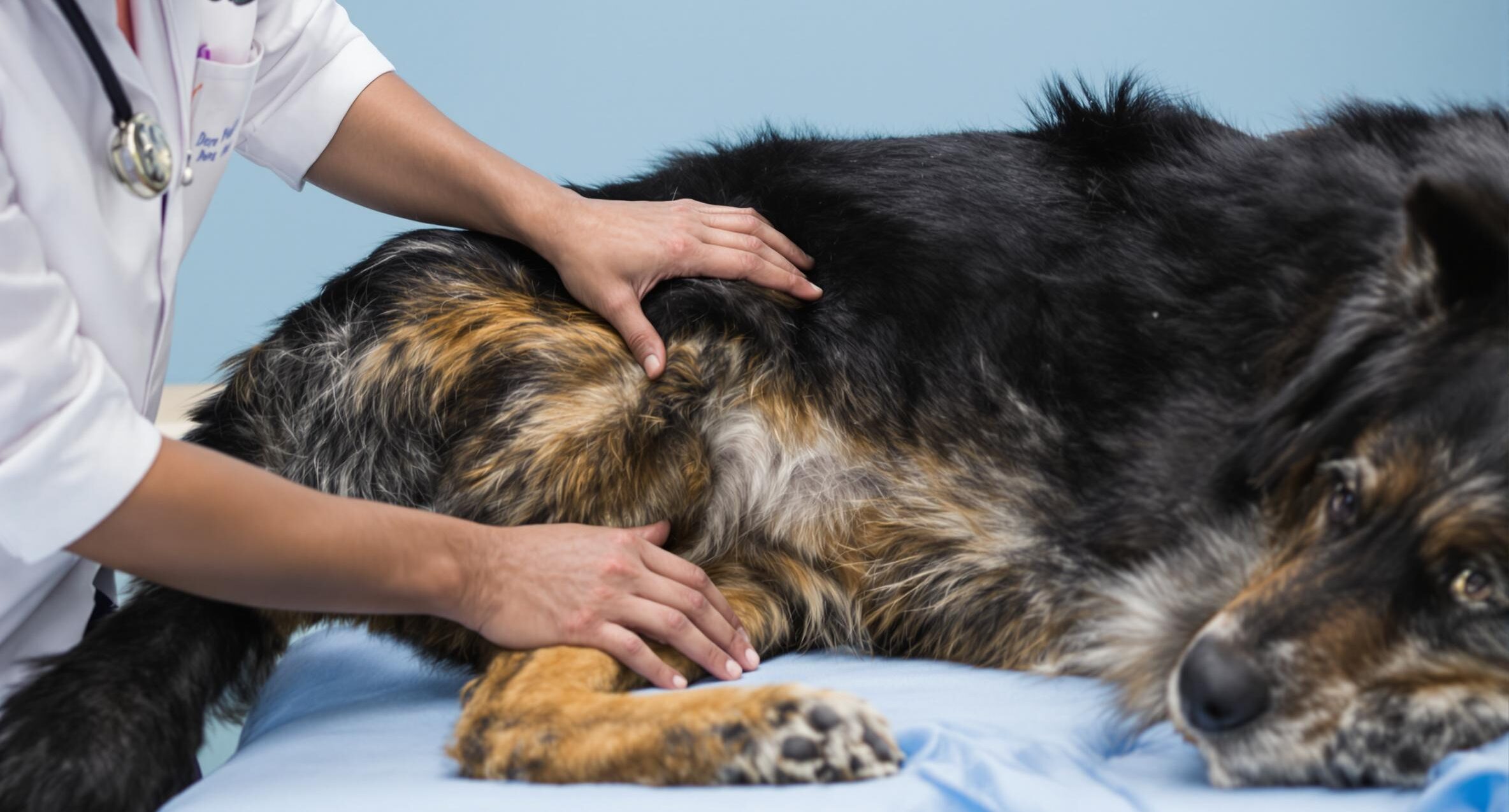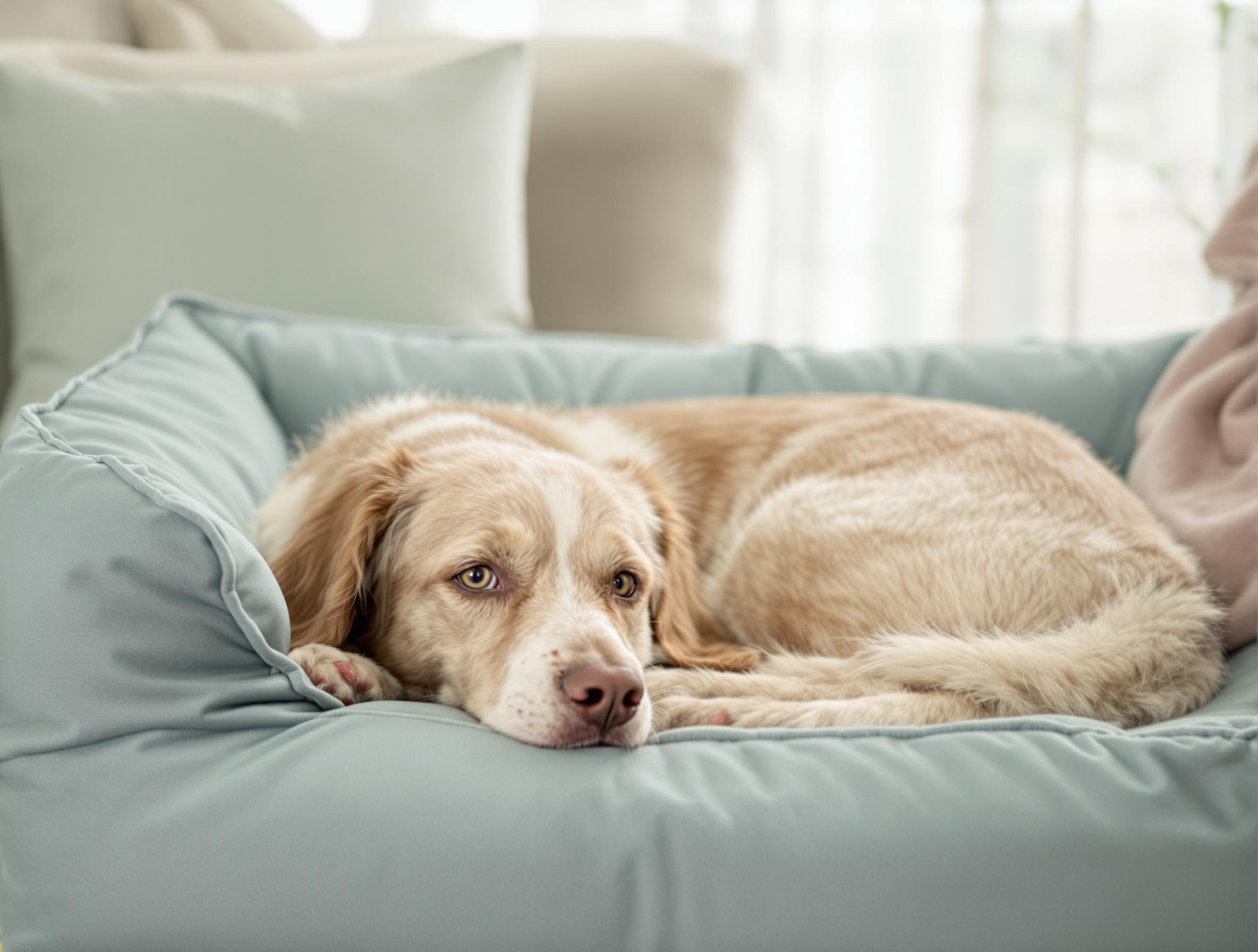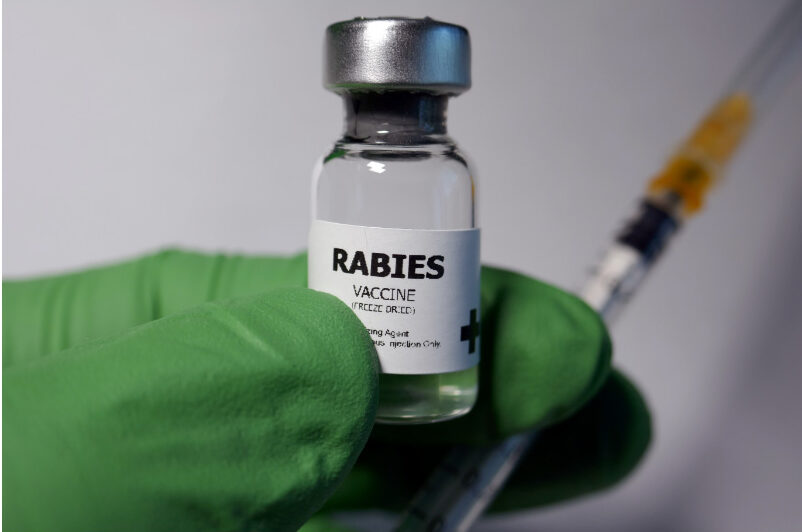How Much Food Should I Feed My Dog? A Simple Guide for Pet Owners
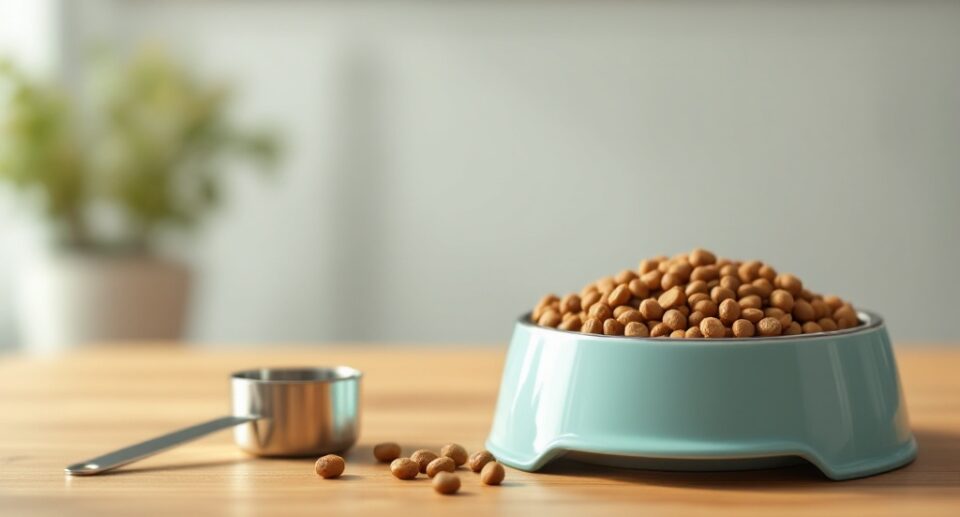
Key takeaways:
- Feeding your dog the right portion size is essential for their overall health and energy levels.
- A dog’s diet should be adjusted based on factors like breed, age, activity level, and overall health to help them maintain a healthy weight.
- Regularly checking their body condition and behavior ensures they’re getting the nutrition they need to stay happy and thriving.
When your dog is looking at you with hungry eyes, it’s hard to be confident that you’ve fed them enough. Are they underfed? Maybe I should give them more, but overfeeding isn’t good. Just how much food should I feed my dog? Figuring out the right portion size can be tricky, but getting it right will make a big difference in your dog’s overall health, energy levels, and long-term well-being.
Just like humans, every dog has unique nutritional needs—their ideal portion size depends on their breed, age, activity level, and overall health. A vet can help tailor a nutrition plan that supports their specific lifestyle and health needs, ensuring they get just the right amount. If you’re unsure where to start, PetHealthMD can be an excellent resource for pet owners looking for helpful guidance on dog nutrition and feeding.
Now that we’ve covered the importance of portion control, let’s explore the different factors that affect a dog’s diet.
Understanding key factors: Breed, size, age, and activity level
Every dog is different, and their nutritional needs depend on several important factors. Here’s what to consider when determining your dog’s portion sizes.
- Breed and size – Larger breeds, like German Shepherds, require significantly more daily calories than smaller dogs. On the other hand, toy breeds, such as Chihuahuas, have fast metabolisms and often need smaller, more frequent meals to maintain steady energy levels.
- Age – Puppies, adult dogs, and senior dogs have very different dietary requirements. Puppies need more frequent meals to support their rapid growth, while adult dogs typically do best with two meals per day. Senior dogs may require fewer calories if they’re less active, but some need specialized diets to support joint health, digestion, or chronic conditions.
- Activity level – A highly active dog, like a Border Collie that spends hours herding or a Retriever that loves to swim, burns far more calories than a dog that prefers lounging on the couch. In fact, active dogs may need up to 40 percent more food than their less active counterparts.
- Health status – Some breeds, like Schnauzers, have specific dietary needs that require careful monitoring. After spaying or neutering, a dog’s metabolism can slow down by 20 to 30 percent, meaning they may need fewer calories to avoid unnecessary weight gain.
- Body condition – One of the easiest ways to check if your dog is at a healthy weight is to run your hands along their sides. You should be able to feel their ribs without pressing too hard. When viewed from above, they should have a defined waist, rather than a round or bloated appearance.
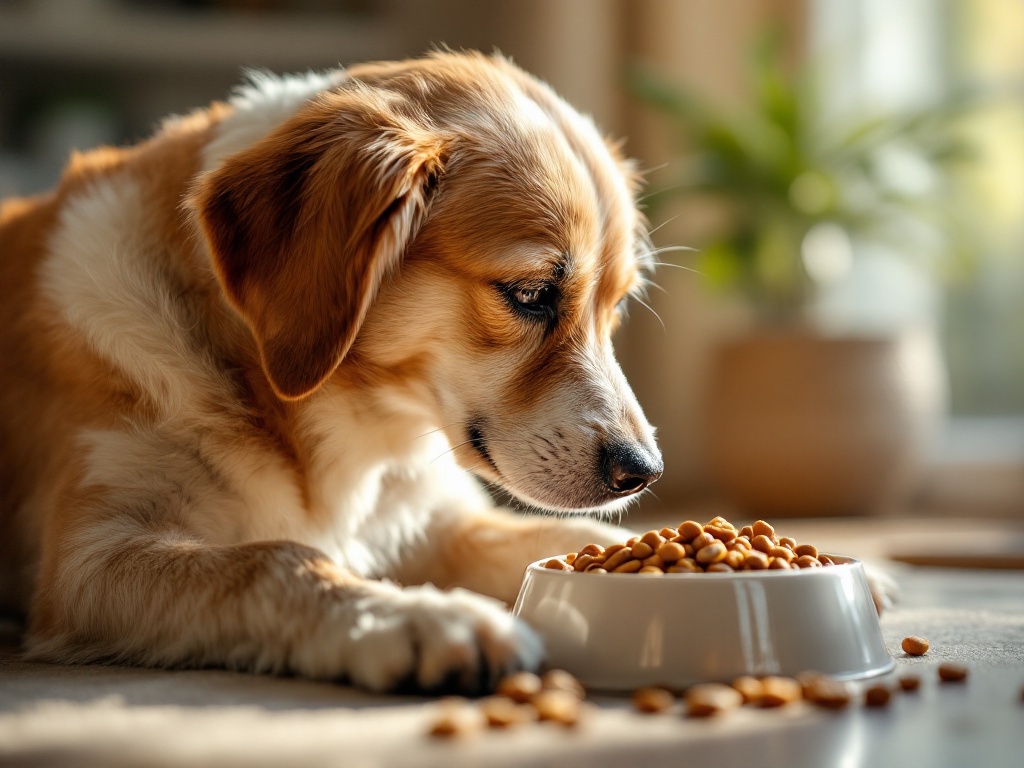
How often should I feed my dog?
Establishing a consistent mealtime routine is one of the best ways to keep your dog healthy, happy, and energized. Most adult dogs thrive on two meals a day, spaced about eight to twelve hours apart. This schedule helps maintain steady energy levels, supports digestion, and prevents overeating.
Puppies, on the other hand, need more frequent meals to fuel their rapid growth and endless energy. Young puppies under six months old do best with three to five small meals a day, gradually transitioning to two meals as they approach their first birthday. A general guideline is:
- 6 to 12 weeks old – Four meals a day
- 3 to 6 months old – Three meals a day
- 6 to 12 months old – Two meals a day
A regular feeding schedule also makes it easier to monitor your dog’s appetite and portion control. Some pet owners consider free-feeding—leaving food out all day—but this can make it hard to track how much your dog is actually eating and may lead to overeating or weight gain. Spreading meals throughout the day is also a better option than feeding one large meal, which can leave your pup feeling sluggish or uncomfortable.
What is the best dog food for my pup?
The best dog food should provide a balanced mix of protein, healthy fats, fiber, vitamins, and minerals to keep your pup happy and healthy. There are three main types of dog food:
- Commercial dry kibble – Convenient, cost-effective, and formulated with essential nutrients. Look for high-quality brands that list real meat as the first ingredient and avoid fillers like corn, wheat, and artificial additives.
- Canned (wet) food – Higher in moisture, making it a good option for dogs that need extra hydration. Many wet foods contain more protein and fewer preservatives than kibble.
- Fresh or raw food – Minimally processed and packed with whole ingredients. Available through specialized pet food services or homemade, though raw diets should be carefully balanced with veterinary guidance.
Is homemade the best option?
Some pet owners prefer making their dog’s food at home because it gives them full control over ingredients and ensures their pup gets fresh, high-quality meals. When properly balanced, homemade food can help maintain a healthy weight, improve digestion, and even alleviate allergies. Plus, it eliminates the artificial additives and fillers found in some commercial pet foods.
However, it’s important to make sure homemade meals meet all of your dog’s nutritional needs. A well-rounded meal should include:
- Lean proteins like chicken, turkey, beef, or fish
- Healthy fats from sources like fish oil or flaxseed
- Carbohydrates such as brown rice, quinoa, or sweet potatoes for energy
- Vegetables like carrots, peas, and spinach for essential nutrients
- Calcium sources like crushed eggshells or plain yogurt for strong bones
Just remember to introduce new foods slowly and watch for any signs of allergies or digestive issues. If you’re planning to make homemade dog food, it’s best to work with a veterinarian or pet nutritionist to ensure your dog gets a balanced diet that supports their overall health.
Can I feed my dog “human” food?
Yes! Many human foods, such as those listed above, are safe for dogs and can be a great addition to their diet when given in moderation. However, some human foods are toxic to dogs and should always be avoided, including:
- Chocolate – Contains theobromine, which is toxic to dogs and can cause heart issues, seizures, or even death.
- Grapes and raisins – Can lead to kidney failure, even in small amounts.
- Onions and garlic – Damage red blood cells, leading to anemia.
- Avocados – Contain persin, which can be harmful to dogs in large amounts.
- Macadamia nuts – Can cause weakness, vomiting, tremors, and hyperthermia.
- Cooked bones – Can splinter and cause choking or internal injuries.
Can dogs eat cat food?
Many dogs find cat food irresistible because it’s higher in protein and fat, making it smell and taste extra appealing. But just because they want to eat it doesn’t mean they should.
Cat food is specially formulated for a cat’s unique dietary needs, which are very different from a dog’s. Cats are obligate carnivores, meaning they require a diet rich in animal proteins and certain nutrients like taurine that dogs don’t necessarily need in large amounts. Dog food, on the other hand, is designed to provide a balanced mix of proteins, carbohydrates, and fats to support overall canine health.
While an occasional nibble of cat food won’t harm a healthy dog, regularly eating cat food can cause problems. The higher fat and protein content can lead to digestive upset, weight gain, and even pancreatitis. If your dog seems obsessed with cat food, it’s best to keep it out of reach and stick to a well-balanced dog diet.
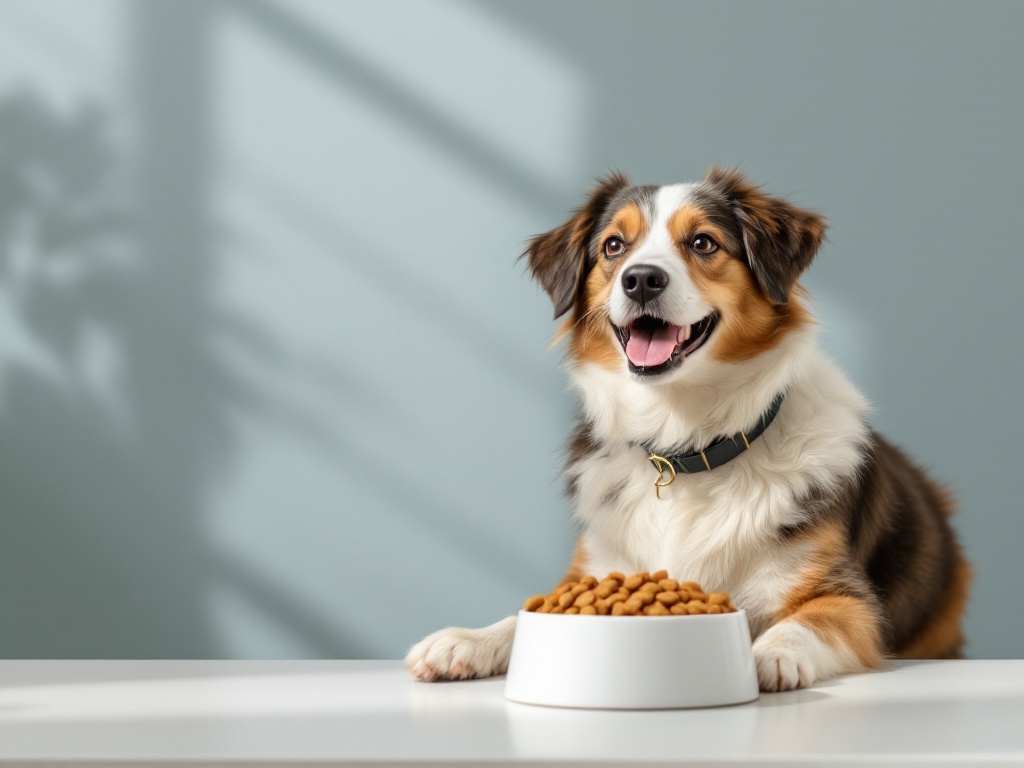
Tips to ensure a balanced diet
Getting your dog’s food portions just right can feel like a guessing game, but it’s easier than you think. A few simple habits can help your pup maintain a healthy weight, steady energy levels, and overall well-being. Here are some practical tips to keep their diet balanced and nutritious.
- Measure meals accurately. Using an ordinary cup or scoop can lead to overfeeding, so stick to a dedicated measuring cup or kitchen scale for precision. Keeping your measuring tools next to your dog’s food makes it easy to stay consistent at every meal.
- Pay attention to body language. A well-fed dog maintains steady energy levels throughout the day and shows interest in food without constantly begging. If you’re unsure whether your dog’s appetite and behavior are on track, learning to read their signals can help you adjust portions as needed.
- Adjust portions based on activity level. A working or athletic dog will likely need a little extra food, while a more sedentary pup may require smaller portions to avoid weight gain. Making small changes based on their daily routine ensures they get the right amount of fuel without overdoing it.
- Monitor weight regularly. Checking your dog’s weight once a month can help catch changes early before they become a problem. Even minor adjustments—like adding or reducing food by just a couple of tablespoons—can make a noticeable difference over time.
Give your dog the best nutrition with the right feeding plan
Making the right choices about your dog’s diet plays a huge role in their long-term health, happiness, and even lifespan. One of the most common questions pet parents ask is, “How much food should I feed my dog?” The answer isn’t one-size-fits-all—it depends on factors like breed, age, activity level, and specific health needs. Getting portion sizes right helps prevent obesity, digestive issues, and nutrient deficiencies, keeping your dog in their best shape.
To make feeding even easier, PetMeds offers a convenient selection of high-quality dog food and treats to support your pup’s nutrition. Whether you need premium kibble, nutrient-rich wet food, or healthy training treats, you can find everything you need in one place.

